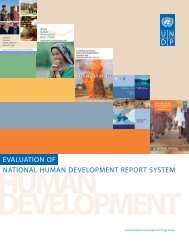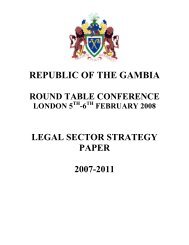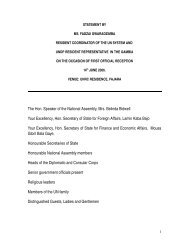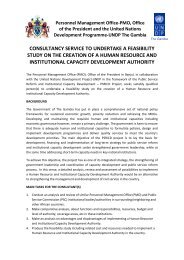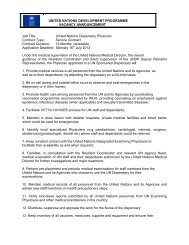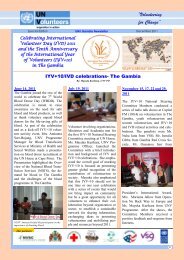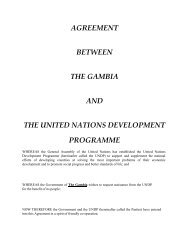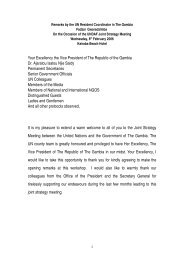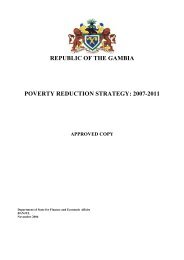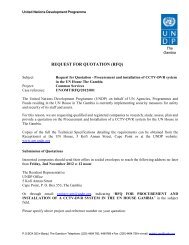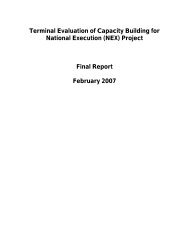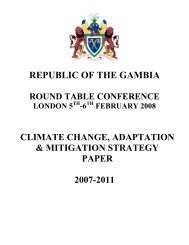Introduction - UNDP The Gambia
Introduction - UNDP The Gambia
Introduction - UNDP The Gambia
You also want an ePaper? Increase the reach of your titles
YUMPU automatically turns print PDFs into web optimized ePapers that Google loves.
________________________________________________________________________________________________________________________<br />
Appendix 1: Human Development in <strong>The</strong> <strong>Gambia</strong><br />
According to the provisional results of the 2003 Population and Housing Census, the population of<br />
<strong>The</strong> <strong>Gambia</strong> is estimated at 1,364,507 persons compared to 1,038,145 persons in April 1993. This<br />
represents 31.4 per cent increase over the previous decade and an average annual growth rate of<br />
2.77 per cent per annum compared to the 4.2 per cent over the period 1983 to 1993. <strong>The</strong> observed<br />
drop in the annual growth rate is the accumulated effect of various socio-economic factors<br />
including the massive outward movement of refugees from neighbouring countries as a result of<br />
return to peace in Sierra Leone, Liberia, and Guinea Bissau and recent decline in economic activity<br />
coupled with an increase in the cost of living.<br />
Figure 3 illustrates the levels of growth of the population of <strong>The</strong> <strong>Gambia</strong> from 1963 to 2003.<br />
Figure 3: Population of <strong>The</strong> <strong>Gambia</strong>, 1963-2003<br />
<strong>The</strong> provisional figures also show that <strong>The</strong> <strong>Gambia</strong> has a population density of 128 persons per<br />
square kilometre. This indicates an increase of 31 persons per square kilometre over the 1993<br />
population density of 97 persons per square kilometre. <strong>The</strong> highest population density is in the<br />
Greater Banjul A-Area.<br />
<strong>The</strong> provisional figures further indicate an overall sex ratio of 98, slightly lower than the 1993<br />
Population and Housing Census figure of 100, which indicated parity in terms of male and female<br />
population sizes. High population growths, high population density, a decline in economic activities<br />
and increasing evidence of growing poverty have had a combined adverse impact on the Human<br />
Development Index.<br />
Human Development Index for the <strong>Gambia</strong> 2005<br />
<strong>The</strong> Human Development Index (HDI) is a composite index that measures the average<br />
achievements in a country in three basic dimensions of human development:<br />
• a long and healthy life as measured by life expectancy at birth<br />
• knowledge as measured by the adult literacy rate and the combined gross enrolment ratio for<br />
primary, secondary and tertiary schools<br />
• a decent standard of living as measured by GDP per capita.<br />
________________________________________________________________________________________________<br />
Building Capacity for the Attainment of the Millennium Development Goals in <strong>The</strong> <strong>Gambia</strong> National Human Development Report 2005<br />
70




